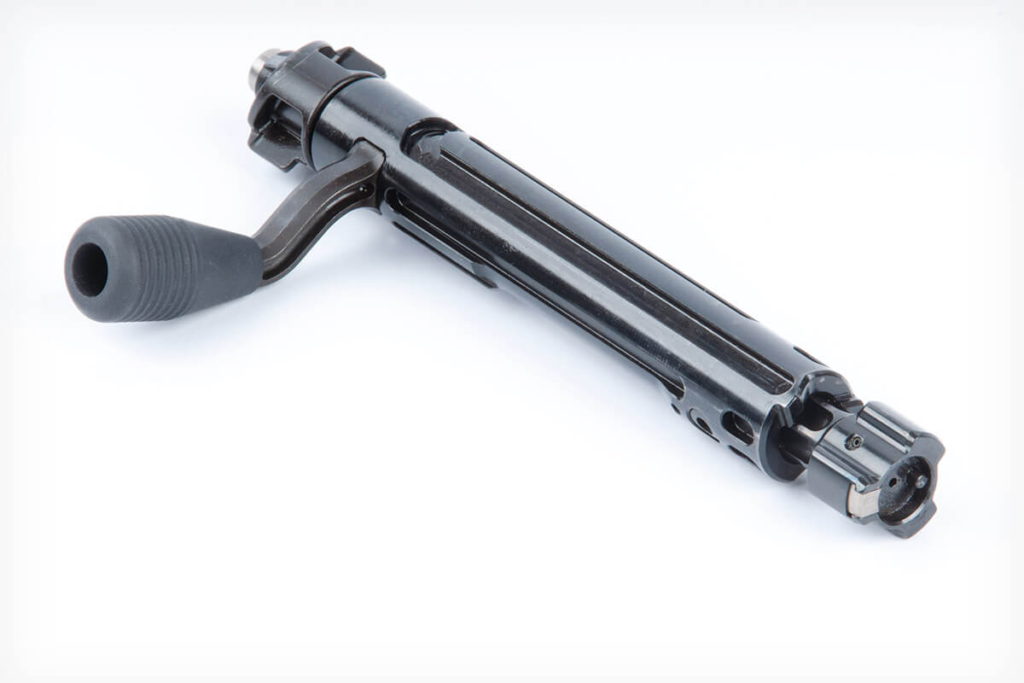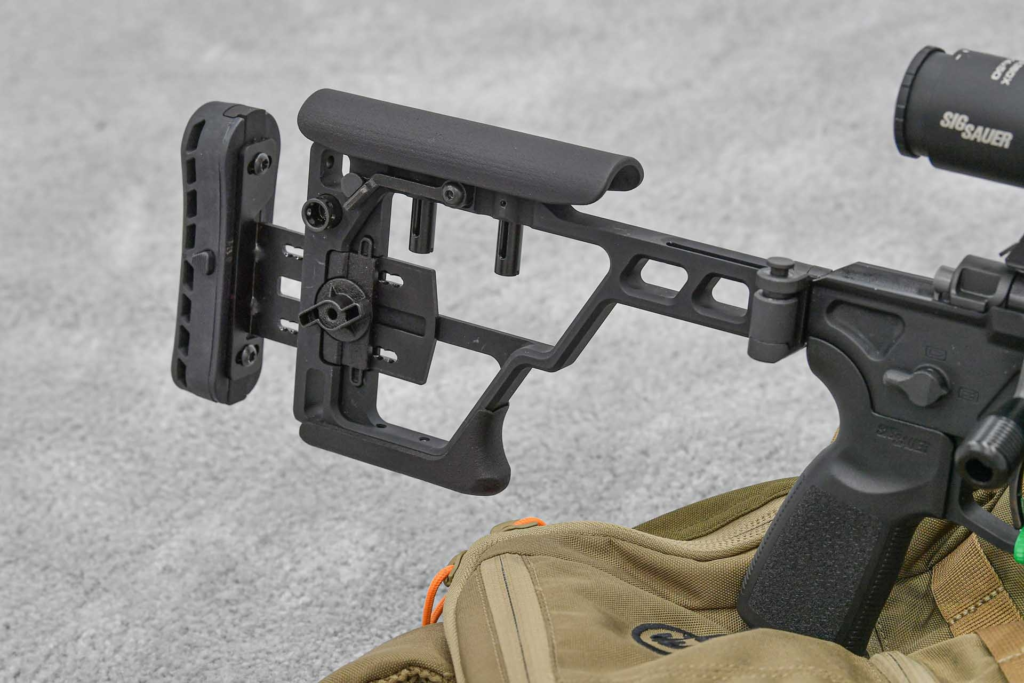Occasionally your editor runs across a firearm he feels compelled to write about. You can read some of his other reviews here, here and here.Recently, I had the opportunity to shoot such a gun; the Sig Sauer Cross. The Cross isn’t a new rifle, exactly. It was introduced in 2019. However, this is the first time I’ve been able to put one through its paces. As you’ll see, I came away pretty impressed by this rifle.
The Cross is a bolt action and comes in three chamberings, .308 win, 6.5 Creedmoor and .277 Fury (more about .277 later). The .308 and .277 chambered guns come with an 16″ barrel, the 6.5 gets an 18″ tube. The controls are similar to an AR in style and location. The bare gun weighs in at 6.5 pounds.
The 3 lug bolt runs smoothly in the one-piece monolithic aluminum receiver. The bolt knob is large and positioned in the right spot to run the bolt.

Unlike most bolt action rifles, the Cross uses an AR style barrel extension and the bolt locks into that. The rifle ships with single 5 round mag, but standard ACIS pattern magazines are used, so finding extras will not be a problem. The mag release is an unobtrusive button inside the trigger guard, but the size and location give me little worry about inadvertently dropping the magazine. The trigger is a very nice two stage that broke very cleanly at 3 lbs. It is user adjustable, but I didn’t adjust it from the factory setting.
The stock is fully adjustable for length-of-pull, cant and cheek-riser height and location. No tools are required for any adjustments.

All of the stock adjustments are easy to make and lock into position, though the folding mechanism is a bit finicky. Folding the stock requires you to push down on a button at the top of the hinge and pull up on the stock at the same time. Once you get the hang of the procedure, the stock folds easily and locks firmly into place, either open or closed.
In lieu of a standard fore end, the Cross sports an AR type tubular handguard. There are all kinds of M-lok slots so you can mount any accessories you choose. The barrel is a satin finished stainless and is threaded 5/8-24. This allows you to mount a muzzle device or suppressor easily.
The gun I tested was chambered in .308, but as I said above it is available in 6.5 and .277 Fury. I have yet to see either ammo or a rifle chambered in .277, although both are listed on the SIg website as being available. The .277 Fury round is the one that got accepted by the US Military when they adopted the Sig XM-7 (Sig MCX Spear) and the Sig XM-250 LMG. The .277 round uses a three-part case and produces around 80k PSI chamber pressures to launch a 140 gr projectile at close to 3000 fps out of a 16″ barrel. Compare that to the 6.5 Creedmoor. That round runs in the 60k PSI range and gets 2750 fps with a similar weight projectile and a 26″ barrel.
I wasn’t planning on testing or even shooting this rifle today, so I didn’t bring a chronograph. That said, .308 doesn’t typically suffer all that much from velocity loss in shorter barrels.

The gun I tested was a .308 and wore an Arken EP-5 5-25×56 scope. A quick note about Arken Optics, I found out about the company a couple of years ago. While I don’t own the optic on the gun I shot today (I don’t own the gun either) I do own several other Arken scopes and wouldn’t hesitate to recommend them. They make a quality optic for not a lot of money. I ‘box’ tested the first one I bought and was surprised at the accuracy of the adjustments.
The accuracy of the gun was respectable. I averaged .75 MOA with a variety of ammo and widely varying weather conditions. My two best 5 shot groups, .45 MOA, came with a slightly surprising pair of loads; a hand load with 168 gr Berger VLD Target Match bullets and 150 gr Winchester white box (!) bulk ammo. My worst group, 1.4 MOA, came from Federal 150 gr Non-Typical. There was very little thermal shift unless I really ran the gun, and even then it tended to only string the shots vertically a little bit, maybe .75 MOA.
All of the accuracy testing was done from a Caldwell Rock front rest and a rabbit ear rear bag. The shape of the rear of the stock facilitates the use of a rear bag.
Off the bench this rifle really performed well. I shot it from a variety of off-hand and hasty support positions. The size and shape of the handguard really helped when using trees and the like as an improvised support.
So, what is this gun good for? Sig markets it as a PRS (Precision Rifle Series, a competitive rifle shooting sport) style hunting rifle. It is all that and more. It’s light enough to haul into the backcountry on a hunt, more than accurate enough to hit what you’re aiming at and folds down into a compact package.
I wouldn’t hesitate to recommend this rifle. That said, it is a bit on the pricey side at $1500 (YMMV). But it does fall in line price wise other rifles in this category, the Ruger Precision and the various Savage chassis models while being considerably lighter.